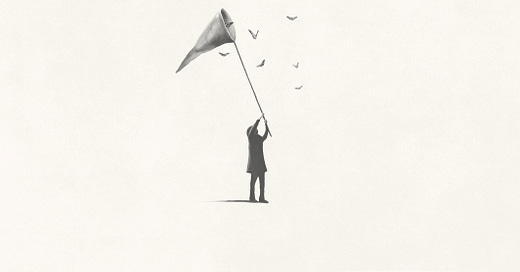Before Design Thinking comes the Spark
Once you have an idea in mind, how do you kick off the Design Thinking journey?
Literature suggests that Empathy is the first step, referring to the need to understand users well before defining the challenge followed by brainstorming, prototyping, and testing solutions.
But so much more happen prior to this official first step.
You’ve observed issues; you feel frustrated, excited, or curious. You likely already googled or talked with people and have a collection of anecdotal notes and links. You are inspired by apps that target a similar concern. Or perhaps something in the news sparked your interest “hmm, should I explore using AI?”
These observations, thoughts, and emotions are the seeds of innovation. They are the sandbox where initial thoughts and findings connect and evolve.
Yet, I have not come across any Design Thinking template that encourages and allows practitioners to fully capture or organize these early seeds of inspiration.
So I built my own Notion template to fill the gap.
The Benefits of Brain dumping
Despite sounding chaotic, brain dumping is an underrated yet powerful activity for individuals and teams alike. When done effectively - and with some structure - brain dumping offers these benefits:
ensures nothing of potential values are lost
keeps team documentation and communication short and sweet
a cathartic process that clears one’s head for better thinking
writing it out helps clarify thoughts, detect patterns, and generate more ideas
once organized, serves as a reference throughout the project
Here’s how to brain dump effectively
1. Start with “just write”
Begin by jotting down what’s on your mind.
Don’t treat it as a formal document - it’s just a big white space where you capture all observations, feelings (e.g. “The way we do it now is so stupidly slow! I wasted hours just to set it up!”), stuff you've read, your What-if’s and How-about’s….you get the picture.
Aside from serving as a depository, you may discover during this process further thoughts and follow-up actions. For this reason, I also have a “To Do” panel in my template to capture action items.
By the end of this exercise, you will likely feel mentally cleared and ready for the next stage.
2. Capture your Core Concept
You may already have a solution in mind.
Strictly speaking, this is a no-no in the land of Design Thinking. Being solution-first severely limits your ability to explore all possible solutions. In addition, you are riding on untested assumptions with limited understanding of your target users.
However, in practice, a concept solution is often what kicks off the whole project.
In fact, I would argue that is a key part of innovation, when something triggered us to explore all sorts of “What if?” or “How about?” questions. I have elaborated this point further in my post Emotions at the Helm: Designing Solutions Start with a Gut Feeling.
Therefore, in my Notion template, there is a text box where I enter my “Big Idea”. Consider it as a beacon of sort to remind myself what sparked my initial curiosity, as long as it does not interfere with subsequent research or ideation exercises.
3. Organize using a database
Next up, organization.
In the beginning and throughout a Design Thinking project, you will come across lots of relevant info.
For example, in your LinkedIn feed, you discover a second-degree contact who may be a great advisor for your venture. Or you read online about a company that is doing something similar (a potential competitor?).
Sometimes you are not sure if the data is relevant - but just in case, you need a system in place where you can
capture the data in one place on the go
sort and retrieve info efficiently
A database is great for this purpose when properly designed and tagged.
Below is a snapshot of my Notion reference database. For my purpose, I only need the name, tags, note, and URL columns. If you work with a team, you may need additional fields e.g. Status, Assigned Member and so on
4. Webclipping for ongoing data capture
A top reason for me being a fan of Notion is its browser webclipper.
Whenever I come across something relevant online, I can instantly add it to my Database by just one click. It has saved me lots of time.
Final Thoughts: the importance of capturing initial thoughts
The spark that ignites innovation happens long before we formally begin the Design Thinking process. By creating a system to capture and organize these early-stage thoughts, you’ll lay a nice, strong foundation for your design and development journey.
How do you capture your early thoughts? Do you have any favourite tools and tips? Do share in the comments below!
Previously in this series:
Build Log #0: Follow me along my Journey of Innovation
Build Log #1: Create a way out of Tedious Analogue Tracking







